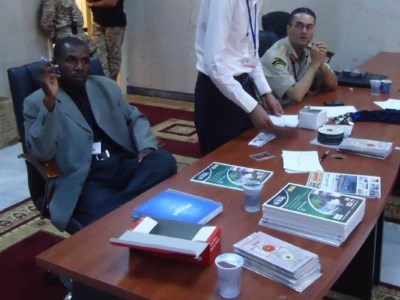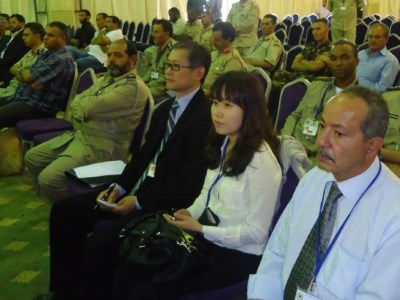The Loitering munitions, Lurking munitions are a new type of emerging weapon systems that have gained great popularity in recent years due to their high technical and combat capabilities (Airplanes, bombs, artillery ammunition and winged missiles)
come out singly or in swarms loitering in the sky for a long period of time equipped with different types of warheads that monitor their carefully chosen targets and then pounce on them to carry out precise operations at confrontation points and behind enemy lines to leave behind the great impact of destroying several equipment And the morale of the enemy, which changes the combat and political situation in wars.
Loitering munitions share their characteristics and classification with cruise missiles and unmanned aerial combat vehicles (UCAVs) and differ from drones, being intended to carry out a one-time attack, as well as having a warhead integrated with it and as such can be considered a new weapon that has proven successful and effective.
Many countries have increasingly invested their capabilities and technical expertise in the development of these systems. One of the main advantages of loitering munitions is the ability to improve precision attack capabilities, allowing to engage and destroy hostile targets with precision within long ranges, and this makes them a preferred option for countries facing asymmetric wars. And also for the purposes of strengthening military capabilities and achieving field superiority in the battlefields
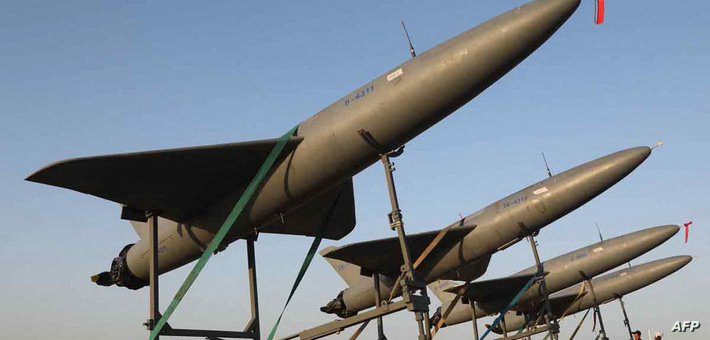
Advantages of using loitering munitions.
The use of loitering munitions systems has many advantages: besides providing enhanced real-time awareness of the field situation, it also provides a comprehensive view of the battlefield, allowing commanders to make correct and critical decisions and better identify and track potential threats. This is especially important in asymmetric warfare, where insurgents and terrorists often operate in urban areas and mix with local residents, allowing commanders to better understand the nature of the situation and potential threats and deal with her with high professionalism.
Loitering munitions can also provide a highly accurate and targeted attack capability. This is particularly important in situations where collateral damage must be minimized, such as in urban areas or when engaging high-value targets where they can be directed at targets that the combat media cannot directly engage. To destroy it accurately, which reduces the risk of collateral damage and ensures that only the programmed target is destroyed.
In terms of cost, its cheap price and operating and maintenance costs encourage the acquisition of many armies, compared to manned conventional aircraft or combat ground systems that require huge budgets to obtain and operate, and therefore they are always among the best options available to enhance air military capabilities, especially for those countries that have limited resources.
There is an important advantage that is calculated for the suicide planes, which is one of the most important forms of loitering munitions. Most of them are silent, quiet, and small in size, and they do not emit any roar. The target can hardly hear them, and they cannot be seen in the air due to their small size, and therefore it is not possible to predict the exact date and direction of their arrival, and this is what makes them, in fact, a very effective weapon. .
The operating systems of the loitering munitions differ from each other, as the air systems operate with autonomous flight techniques and others operate with the specific flight technology with pre-programmed coordinates from the operators, or control them during real time with the integration of the available computer programs for image recognition and the autopilot feature.
Lurking munitions aircraft use sensors that enable them to remain in the air for long periods, and some where they can work in large "swarms" to attack their target, evade or penetrate their defenses and detonate warheads of different weights, as they can search for targets and destroy them using computer algorithms instead of relying entirely on directing their operators. On its targets with facial recognition technology, which means that it can search for individual human targets and identify them with high accuracy. These are intended for assassination operations, and some of them are directed electro-optically, using cameras to scan the terrain and on-board computers to decide for themselves what the targets appear to be.
Loitering munitions are also used for intelligence, surveillance and reconnaissance operations where they can receive and receive information in flight and detect ground radar stations.
Militarily, loitering munitions are divided according to their classification as suicide planes, bombs, or rockets, into two categories according to use: “tactical” and “strategic.” The tactical munitions are characterized by their small size and light weight enough to be carried in a backpack or on foot and can be used against infantry and vehicles with light armor. service and transport wagons, fortifications and trenches.
As for strategically classified munitions, they are larger in size and require large means of transportation to transport and fire them. They are often used against large, hardened mission targets, or for distances farther than the tactical munitions can reach.
Samples of kamikaze loitering munitions.
We go back a little bit in a historical overview to trace the origin of the name, the word "kamikaze" means in the Japanese language "holy wind" and historically the word is used to refer to a typhoon said to have saved Japan from the invasion of a Mongol fleet led by Qublai Khan in 1281 AD, and militarily used to express "suicide attacks", a military tactic for air operations resorted to by Japan within the Axis powers, in the Pacific Campaign during World War II in 1944. Japanese suicide pilots (kamikaze) carried it out with high heroism and professionalism, as they deliberately collided with Allied ships with their planes loaded with explosives, torpedoes and fuel tanks filled with the aim of detonating them, the most famous of which was the attack on Pearl Harbor.
Hence, the name has resurfaced to coincide with the purpose of using loitering munitions and suicide drone systems, which have become an important part of today's wars and are rapidly evolving to suit future wars.
The emergence of loitering munitions is not new and some experts consider that the idea dates back to the era of World War I, as the American flying torpedoes "Curtis Sperry" and "Liberty Eagle" formed the real beginning of the application of the idea of mobile munitions and then a program called "Aphrodite" appeared, with the aim of converting obsolete heavy bombers in his arsenal of the type "B-17 Fortress" into roving munitions carrying inside their hull about 10 tons of explosives and that was during the events of World War II and during that era Nazi Germany had An important experience in this regard, through the Mistell program, when it modified a group of Messerschmitt BF-109 fighters to carry out similar missions.
The experiments and ideas continued to appear after the Harpy aircraft in the late eighties of the last century with similar systems in the same idea and purpose and then developed to keep pace with the actual need for this type of combat systems that appeared strongly again in the fields of war, starting from the operations of the Turks against the fighters of Kurdistan through the combat operations in Syria and the occupied territories to the Russian-Ukrainian war, where it became widely used, especially after Russia resorted to using it in a series of attacks to hit the civilian and military infrastructure According to official Ukrainian statements, the cities of Kiev, Vinnytsia, Odessa, Zaporizhia and other cities have suffered from a barrage of loitering munitions attacks, and Western countries that support them have appealed to intensify their assistance in facing and addressing the new challenge.
The strikes of Iranian-made Shahed aircraft of various kinds, the Russian Lancet and KYB-BLA aircraft hurt the Ukrainian forces and inflicted heavy losses in equipment and fighters, and the world saw this through videos published by the Russian Ministry of Defense or those that spread on social networking sites in which these munitions appeared to annihilate their targets relentlessly.
The Shahed 136 loitering munitions and the Mohajer 6 drones provided a much less expensive alternative to the Russian strikes in which Russian ballistic missiles or winged missiles were used, so the Shahed 136 drones, which are said to have been renamed and used under the name "neighbors" as mobile payloads and loitering munitions that watched their targets and pounced on them with a distinctive performance that dazzled everyone.
Similarly, the Ukrainians used homemade RAM-II kamikaze and Switchblade Switchblade aircraft provided by the United States as part of military aid to strike Russian targets and asked their allies to provide them with more of these lethal weapons, which are characterized by their small size, as they can be carried in a backpack and used by platoon-level soldiers in the field directly and quickly.
The Iranian military-industrial complex has also produced several types, including the Arsh 2 suicide drone, which is characterized by its large operational range, with a range of 2,000 kilometers, in addition to the striking weight of the warhead, which is an effective weapon against targets deep inside enemy territory, and the mini-suicide drone Miraj 521, which is very similar to the American suicide bombing Switch Blade in terms of appearance and performance.
Several African countries have invested in loitering munitions programs as a way to boost their military capabilities, including Nigeria, which is developing Ishoko loitering ammunition, which is used in operations against the terrorist group Boko Haram with a range of up to 15 km to hit a wide range of targets.
The Sudan Military Industry Corporation (MIC) released a Kamin-25 local idle Loitering munitions designed to be launched from an unmanned aerial vehicle (UAV) unveiled And the BK-3 guided bomb during IDEX 2023 recently held in Abu Dhabi.
Paramount Aerospace Systems (PAS), a subsidiary of Paramount – the UAE-based global aviation and technology company, has announced that the leading N-Raven hangout ammunition will begin production in April this year with the first delivery in October, to meet the urgent demands of the armed forces around the world.
There are also newer U.S. versions of loitering munitions, such as the Navy's Coyote aircraft, which uses sensors that enable it to stay in the air for long periods in search of targets like a wolf waiting for prey.
Turkish versions of the same category appeared under the name Kargu is considered one of the new models that are expected to have a great share of success, such as its predecessor Bayraktar, which spread strongly and new models were developed locally in India due to the ongoing war in Ukraine as well as Armenia, where both ammunition and drones played a major role in the outcome of the war, and there are also various models with high technical characteristics produced by Azerbaijan, Belarus, China, the state of the Zionist entity, Taiwan and South Korea.
Many countries have tended to produce loitering munitions significantly, especially after the success shown by this class of weapons in the Russian-Ukrainian war, it is a new weapon and a new challenge to lethal autonomous weapons that will change all the rules of war and will have an important impact in developing new tactics for both its use and response.






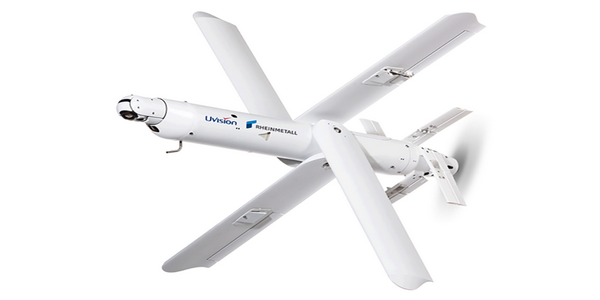


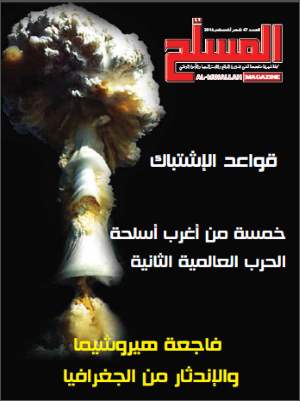
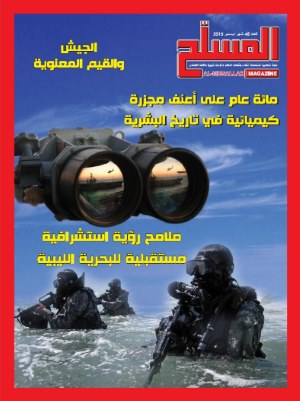
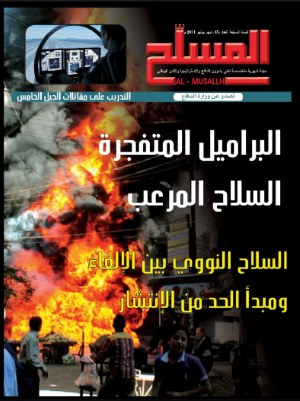
 English
English  العربية
العربية 

